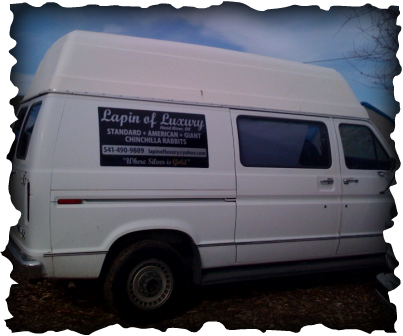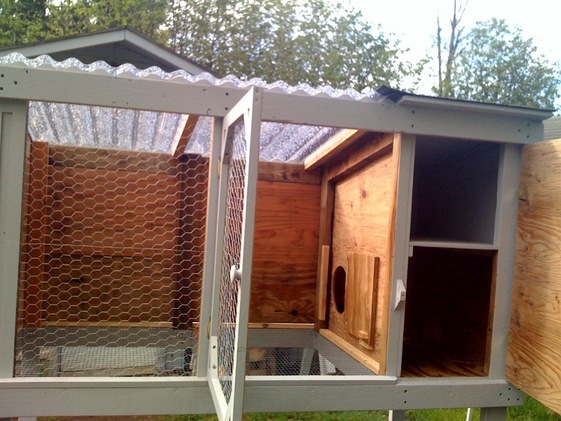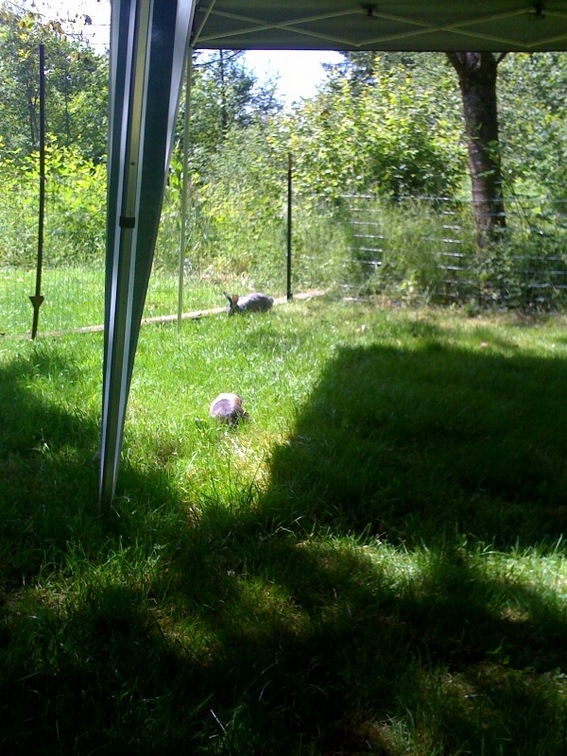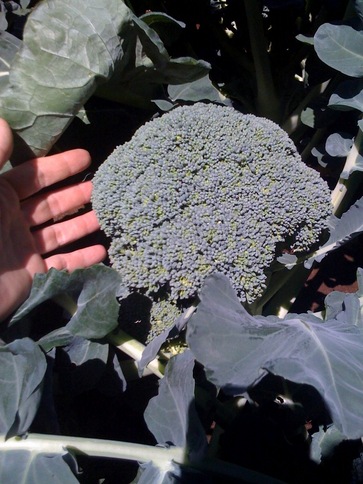Bienvenue!

Hey, have you heard this one?...A Beveren, a Himalayan, and a wild hare walk into a barn....
It all began in WW1 France. (1913 or so). These three breeds were crossed to create the very first Chinchilla rabbit breed called the "Standard Chinchilla". Although many other rabbit breeds sport a "chinchilla" colored coat, the Standard, American, and Giant Chinchilla breeds may not be any other color. The original Standards are the smallest of the "chin" breeds, weighing roughly 5-7 lbs -give or take 1/2 lb either way.
With the import of the little Standard Chinchilla to America around 1920, the creation of a larger version soon began. (Hey, we're Americans that's what's we do). So, after crossing it carefully with the beefy New Zealand rabbit, we were able to increase the size and body mass to 9-10 lbs. Aptly named the 'American Chinchilla'.
Yep, you guessed it. We didn't stop there. After eyeing the large Flemish Giant, breeders began crossing them with their American Chinchillas and thus created a 'Giant Chinchilla' around 1926 that was a little longer bodied but still massive. Affectionately called "The Million Dollar Princess", the first official Giant Chinchilla doe set the mark for the newest and final Chinchilla breed. Weighing in at 16 lbs. Yikes!
So, what do you do with Chinchilla rabbits?
Originally engineered of course, to be meat rabbits, owners have discovered that they have very agreeable dispositions. Many people especially love the Giant Chinchillas' affectionate nature and raise them as house pets. (My Giant Chin lives in the house with me and enjoys lots of cuddle time).
-Carrie
It all began in WW1 France. (1913 or so). These three breeds were crossed to create the very first Chinchilla rabbit breed called the "Standard Chinchilla". Although many other rabbit breeds sport a "chinchilla" colored coat, the Standard, American, and Giant Chinchilla breeds may not be any other color. The original Standards are the smallest of the "chin" breeds, weighing roughly 5-7 lbs -give or take 1/2 lb either way.
With the import of the little Standard Chinchilla to America around 1920, the creation of a larger version soon began. (Hey, we're Americans that's what's we do). So, after crossing it carefully with the beefy New Zealand rabbit, we were able to increase the size and body mass to 9-10 lbs. Aptly named the 'American Chinchilla'.
Yep, you guessed it. We didn't stop there. After eyeing the large Flemish Giant, breeders began crossing them with their American Chinchillas and thus created a 'Giant Chinchilla' around 1926 that was a little longer bodied but still massive. Affectionately called "The Million Dollar Princess", the first official Giant Chinchilla doe set the mark for the newest and final Chinchilla breed. Weighing in at 16 lbs. Yikes!
So, what do you do with Chinchilla rabbits?
Originally engineered of course, to be meat rabbits, owners have discovered that they have very agreeable dispositions. Many people especially love the Giant Chinchillas' affectionate nature and raise them as house pets. (My Giant Chin lives in the house with me and enjoys lots of cuddle time).
-Carrie
All aboard the Bunny Bus

Housing

Each breeding doe lives in her own stand-alone hutch. Standard and
American does get a 6 ft. hutch and our Giant does have 8 ft. hutches.
Every doe hutch has 1/4 inch floor wire (for baby feet) and attached
nesting/potty area and skylight roof
The Grounds

The playpen is almost entirely shaded. Each resident not currently on a
nest or showing that week is allowed 2 hours of "binky" time on fair
weather days.
Salad Bar

There are several garden beds completely dedicated to our residents. No
pesticide or commercial fertilizer is used in them. Of course there is
no need. The rabbits contribute to their garden in their own way.
